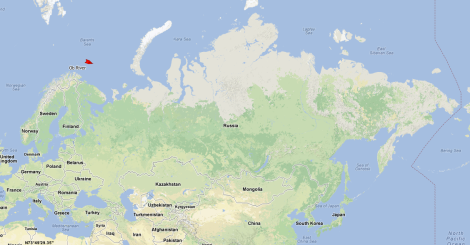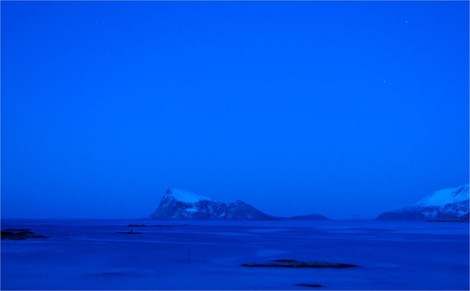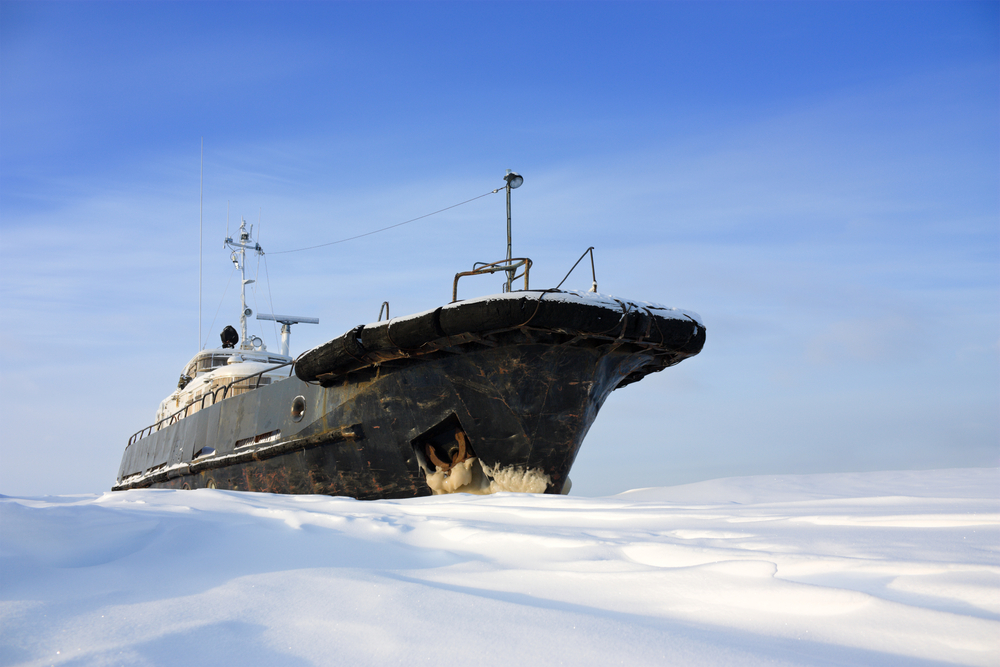The Ob River is a massive tanker that can carry 150,000 cubic meters of liquified natural gas. (You can tell it carries liquified natural gas because the side of the vessel says “L N G” in massive letters.) And the ship is about to do something that no tanker has done before: traverse the winter Arctic to ship fossil fuels from Norway to Japan.

MarineTraffic.comYou can follow its progress from your own natural gas-warmed home! Click to embiggen.
From the BBC:
The tanker was loaded with LNG at Hammerfest in the north of Norway on 7 November and set sail across the Barents Sea. It has been accompanied by a Russian nuclear-powered icebreaker for much of its voyage. …
“It’s an extraordinarily interesting adventure,” Tony Lauritzen, commercial director at [the company that owns the vessel,] Dynagas, told BBC News.
“The people on board have been seeing polar bears on the route. We’ve had the plans for a long time and everything has gone well.”
Oh, good! There are still polar bears!
According to the BBC, the Hammerfest LNG facility (which, I’ll note, is an awesome name) was created to ship gas to the United States. With the natural gas boom created by fracking, the market has shifted to the east — particularly Japan, which needs energy sources in lieu of its nuclear plants. Under traditional conditions, that would have required a route around Europe, through Mediterranean and the Suez Canal, and around the southern expanse of Asia. Now, however, it can slip above Russia and down to Japan in 20 fewer days.
Why is this possible? You know why this is possible. Because we’ve polluted the atmosphere with things like the methane in that tanker.
The owners [of the Ob River] say that changing climate conditions and a volatile gas market make the Arctic transit profitable.
But the fossil fuel profiteers want to assure you that climate change is just a tiny part of this.
“The major point about gas is that it now goes east and not west,” says Gunnar Sander, senior adviser at the Norwegian Polar Institute and an expert on how climate change impacts economic activity in the Arctic.
“The shale gas revolution has turned the market upside down; that plus the rapid melting of the polar ice.”
He stresses that the changes in climate are less important than the growing demand for oil and gas.
Yes, that’s important to note. This huge tanker is shipping fossil fuels through the Arctic — something that has never been feasible before — just because there’s demand for it on the other side. If the Arctic hadn’t melted, they would have done this anyway, somehow.
As the commercial director of Dynagas said: “It’s an extraordinarily interesting adventure.” This changing climate, this brand new world is indeed a fascinating, uncharted adventure for us all!
Polar bears included.

artic pjThe Arctic Ocean, off the coast of Norway.




